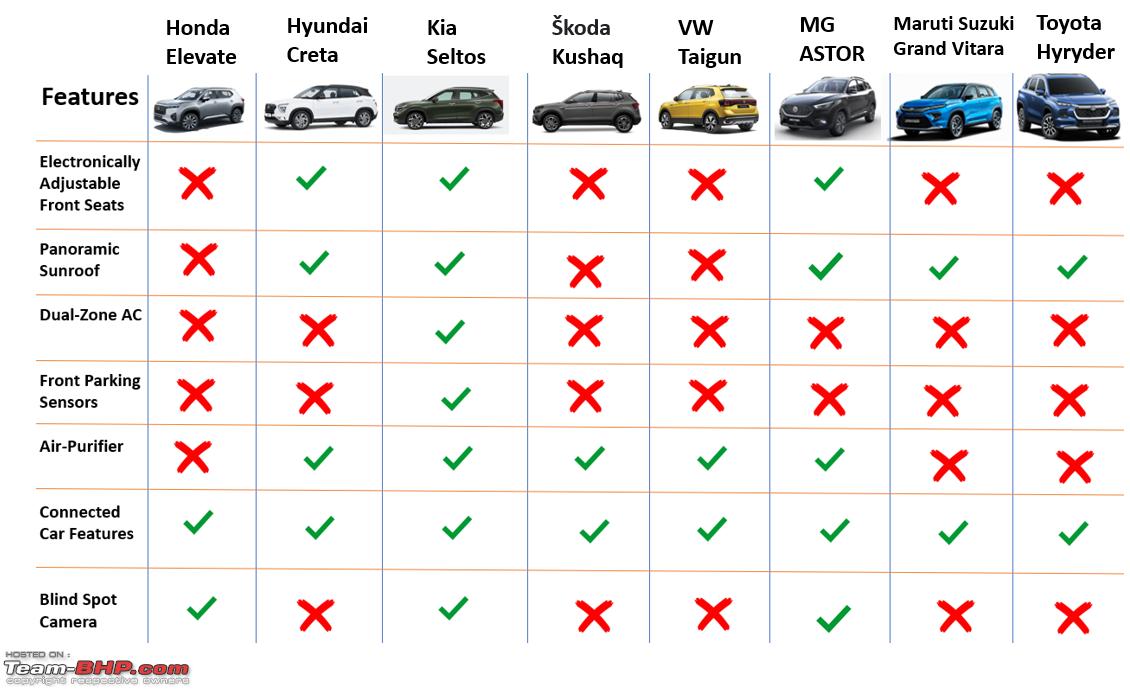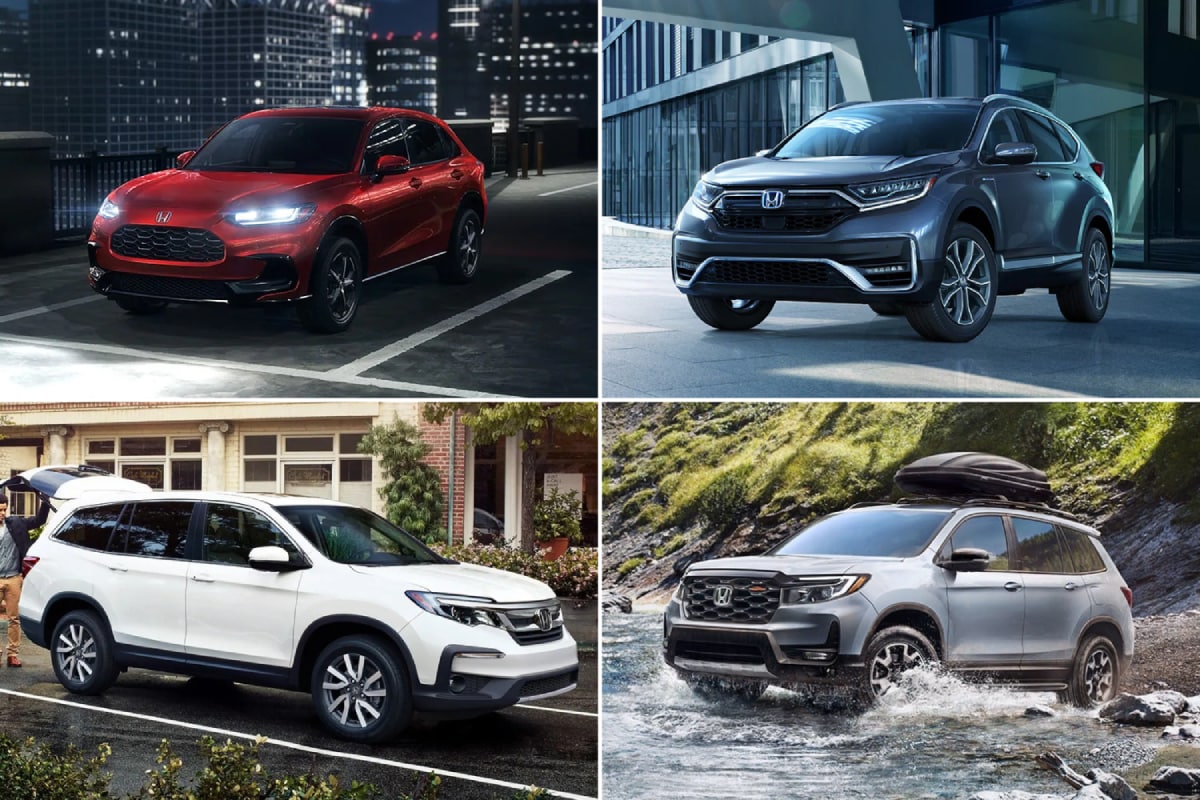Family Crossover Comparison: The Ultimate Guide for 2025
Choosing the right family crossover can feel like navigating a maze. With an ever-growing market filled with options, features, and price points, it’s easy to get lost in the details. This comprehensive guide for 2025 cuts through the noise, providing a clear comparison of the top family crossovers, helping you make an informed decision for your family’s needs. We’ll delve into key areas like safety, fuel efficiency, interior space, technology, and overall value, ensuring you find the perfect ride for your adventures.
Why a Crossover for Your Family?
Crossovers have become the quintessential family vehicle for a reason. They offer a sweet spot between the practicality of a minivan and the driving dynamics of a sedan. Here’s why families are flocking to crossovers:
- Versatility: Combines passenger space with cargo capacity.
- Fuel Efficiency: Generally more fuel-efficient than larger SUVs or minivans.
- Safety Features: Packed with advanced driver-assistance systems (ADAS).
- Elevated Driving Position: Provides better visibility on the road.
- Modern Technology: Equipped with user-friendly infotainment systems and connectivity features.
- Variety of Options: A wide range of models to suit different budgets and preferences.
Key Comparison Factors for 2025 Crossovers
When evaluating family crossovers, several key factors deserve close attention. This section breaks down the critical areas to compare:
- Safety Ratings: Look for high ratings from reputable organizations like the IIHS (Insurance Institute for Highway Safety) and NHTSA (National Highway Traffic Safety Administration).
- Fuel Economy: Consider both city and highway MPG ratings to estimate your annual fuel costs.
- Cargo Space: Measure cubic feet behind the rear seats and with the seats folded down to accommodate your family’s gear.
- Passenger Space: Compare legroom, headroom, and shoulder room in both the front and rear seats.
- Infotainment System: Evaluate screen size, ease of use, smartphone integration (Apple CarPlay, Android Auto), and available features like navigation and premium audio.
- Driver-Assistance Features: Check for standard and available features like:
- Automatic Emergency Braking (AEB)
- Lane Departure Warning (LDW)
- Lane Keeping Assist (LKA)
- Adaptive Cruise Control (ACC)
- Blind Spot Monitoring (BSM)
- Reliability and Maintenance Costs: Research reliability ratings and consider the cost of routine maintenance.
- Price and Value: Compare the base price and available trims, considering the features offered for the price.
Top Family Crossover Contenders for 2025 (Example - Keep in mind specific models will evolve)
( Note: This section provides a general overview. Specific models and features will vary in 2025. Research actual 2025 models as they are released. )
Here are a few popular crossover examples (in no specific order) to consider, along with brief highlights:
- Honda CR-V: Known for its reliability, spacious interior, and fuel efficiency. Offers a comfortable ride and a user-friendly infotainment system.
- Toyota RAV4: Another perennial favorite, renowned for its strong resale value, fuel economy, and available hybrid powertrain. Features a robust suite of safety features.
- Hyundai Tucson: Offers a striking design, a well-equipped interior, and a competitive price point. Boasts a long warranty and a good selection of tech features.
- Kia Sportage: Similar to the Hyundai Tucson, offering a stylish design, a generous warranty, and a wide range of features. Often provides excellent value for the money.
- Mazda CX-5: Stands out with its sporty handling and premium interior appointments. Offers a refined driving experience and a stylish design.
- Subaru Forester: Known for its standard all-wheel drive, excellent safety features, and spacious cargo area. Ideal for families who enjoy outdoor adventures.
Diving Deeper: Key Features and Comparisons
To make your comparison easier, consider the following detailed breakdowns:
Interior Space & Comfort
- Headroom and Legroom: Prioritize models that offer ample space for both front and rear passengers, especially if you have tall family members.
- Seating Configuration: Consider the number of seats and the ease of access to the rear seats.
- Cargo Capacity: Compare cargo space behind the rear seats and with the seats folded down. Look for features like a hands-free liftgate.
- Interior Materials: Assess the quality of materials and the overall design of the cabin.
Technology & Infotainment
- Screen Size and Resolution: Larger, higher-resolution screens are generally easier to use and provide a better viewing experience.
- Smartphone Integration: Ensure compatibility with Apple CarPlay and Android Auto for seamless smartphone integration.
- Connectivity Features: Consider features like built-in Wi-Fi, USB ports, and wireless charging.
- Driver-Assistance Systems: Prioritize models with a comprehensive suite of ADAS features for enhanced safety.
Fuel Efficiency & Performance
- Fuel Economy Ratings: Compare MPG ratings for city and highway driving.
- Engine Options: Consider the available engine options, including hybrid and plug-in hybrid powertrains.
- Driving Dynamics: Assess the responsiveness of the engine, the smoothness of the ride, and the overall handling.
The Importance of a Test Drive
No amount of online research can replace the experience of a test drive. Before making a final decision, visit your local dealerships and test drive your top contenders. Pay attention to:
- Ride Comfort: How does the vehicle handle bumps and imperfections in the road?
- Noise Levels: Is the cabin quiet and free from excessive road or wind noise?
- Ease of Use: Is the infotainment system intuitive and easy to navigate?
- Visibility: Does the vehicle offer good visibility from the driver’s seat?
- Your Family’s Needs: Does the vehicle meet the needs of your family in terms of space, comfort, and features?
Conclusion: Finding the Right Crossover for Your Family’s Future
Choosing the perfect family crossover is a significant decision. By carefully evaluating the factors outlined in this guide, including safety, fuel efficiency, space, technology, and value, you can narrow down your choices and find the vehicle that best suits your family’s needs and lifestyle. Remember to prioritize your family’s specific requirements and always conduct a thorough test drive before making your final decision. Good luck, and happy driving!
Frequently Asked Questions (FAQs)
- What is the best family crossover for fuel efficiency in 2025? (Answer: This depends on the specific models available in 2025, but hybrid and plug-in hybrid versions of models like the Toyota RAV4, Honda CR-V, and Hyundai Tucson are often strong contenders. Research specific MPG ratings for 2025 models.)
- What safety features should I prioritize in a family crossover? (Answer: Prioritize models with standard features like Automatic Emergency Braking (AEB), Lane Departure Warning (LDW), Lane Keeping Assist (LKA), and Blind Spot Monitoring (BSM). Adaptive Cruise Control (ACC) is also a valuable feature.)
- How much cargo space do I need in a family crossover? (Answer: This depends on your family’s needs. Consider how much luggage, groceries, and equipment you typically carry. Look for models with ample cargo space behind the rear seats and with the seats folded down to maximize flexibility.)
- Are there any electric family crossover options in 2025? (Answer: The EV market is rapidly expanding. While specific models will vary, expect to see more electric crossover options from brands like Hyundai, Kia, and others. Research the range, charging times, and features of these models.)
- What is the average price range for a family crossover in 2025? (Answer: Prices vary widely depending on the model, trim level, and features. Expect base prices to start in the low-$30,000 range and can easily exceed $45,000+ for higher trims with premium features. Research pricing for specific models as they are released.)




